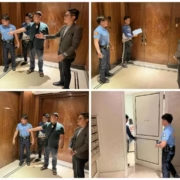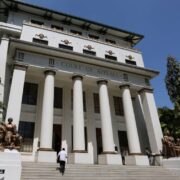We shouldn’t give up on senior high school

When the senior high school (SHS) program was first legislated, many of us in the education sector knew it would be challenging to implement. But like most educators, my team in Mano Amiga and I believed in its vision of equipping students with enhanced academic, technical, and vocational skills to foster better college readiness and employability after high school.
When we looked at the requirements for private schools, however, we felt disheartened. Most of our students wanted to take the science, technology, engineering, and mathematics strand. But in order for us to secure a permit, we were required to build two more science laboratories, another computer laboratory, and a separate library, on top of the new classrooms and significant operational investments needed to hire people for the specialized subjects. For a small nonprofit school with limited resources and only about 80 potential enrollees, investing over P50 million for capex (capital expenditure) and opex (operating expense) simply wasn’t feasible. So we made the painful decision not to offer an SHS program. Instead, we helped our scholars transition to bigger schools that could meet the requirements.
Recently, Sen. Jinggoy Estrada put forward a proposal to just dissolve the entire SHS system. According to Senate Bill No. 3001, the SHS has failed to improve learning outcomes and has only added financial and psychological burdens on students and their families. While it acknowledges and echoes the very real frustrations of many stakeholders, it promotes a reckless mindset of immediately choosing complete abandonment over course correction.
Despite our school’s own challenges and experience, I continue to believe the K-12 program is the right direction to align Philippine education with global standards and to effectively prepare students for life beyond high school. If done well, SHS would have allowed students, especially those who could not afford college, to still obtain good jobs and sustainable employment. Reverting to a 10-year curriculum is not only disregarding the significant investments, efforts, and small wins that have been achieved so far, it also means giving up on the opportunity to build a more inclusive, globally competitive, and future-ready education system.
We must recognize that education systems, with their interconnected problems, are quite complex and any real change will take a while. According to the Philippine Business for Education, SHS graduates in pilot models with industry partnerships had significantly higher employment outcomes than those in traditional tracks. While it is true that SHS has not yet achieved many of its goals, the question that our policymakers should be asking is not whether to cancel the program completely but why the program has worked for some and failed for many. By better understanding these gaps, we can implement changes to ensure the system can work for all.
Surveys and stakeholder consultations reveal the oft-encountered challenges. Both education experts and students say that the SHS curriculum is too congested with several unnecessary subjects. This is compounded further by a shortage of qualified teachers with proper training to teach highly specialized subjects, leading many schools to implement a substandard program. Many schools also did not have access to industry linkages to deliver meaningful work immersion experiences. These issues do not signal the hopelessness of SHS itself; they expose the lack of sufficient evaluation of the program’s past implementation so that gaps and adjustments needed could have been identified and done promptly.
Department of Education (DepEd) Secretary Sonny Angara has made considerable strides to unearth and understand the depth and extent of the systemic problems that plague not just the SHS’ implementation but the broader structural weaknesses that have left our education system under-resourced and overburdened.
For SHS specifically, DepEd has recently focused on streamlining the curriculum to reduce subject redundancies and better align with practical skills, as well as expanding the work immersion program to ensure students can have more opportunities to gain employability skills. The program could also benefit greatly from more proactive initiatives from the private sector to forge industry partnerships that offer clear employment pathways for SHS graduates. We also need less restrictive frameworks for permit requirements so that smaller mission-driven private schools aren’t excluded from participating in the SHS program due to outdated and rigid regulations.
The Philippine education system is facing serious problems. But the issue isn’t the extra two years in high school. The deeper issues lie in our failure to plan and adjust based on evidence, to ensure the efficient and honest use of resources, and to pursue system-wide initiatives with the strategic foresight and the patience they require. Dismantling SHS and going back to a 10-year curriculum does not address these root causes. It merely erases an act of reform, that if properly implemented and supported, could still deliver on its promises.


















Building the foundations of our digital future